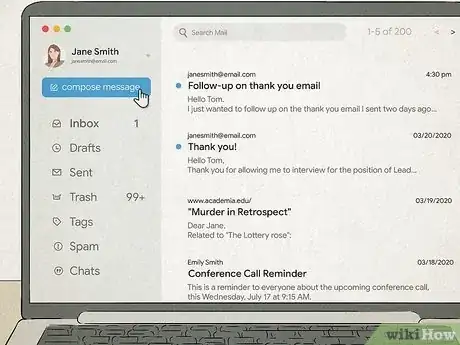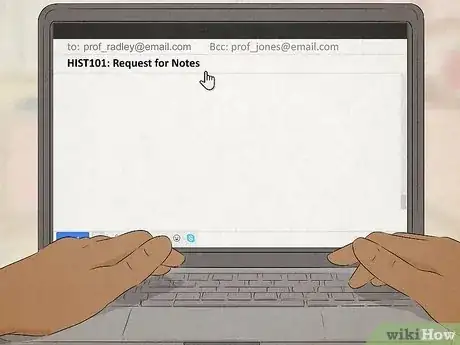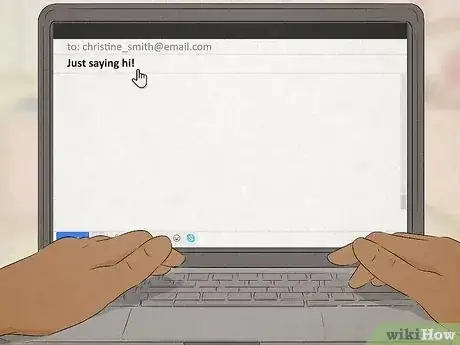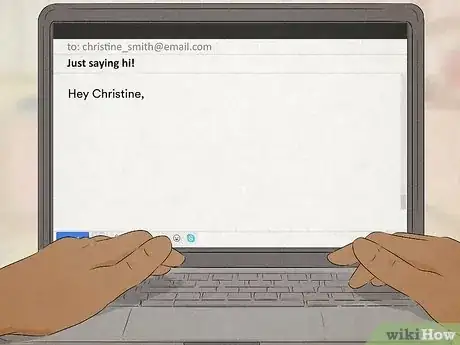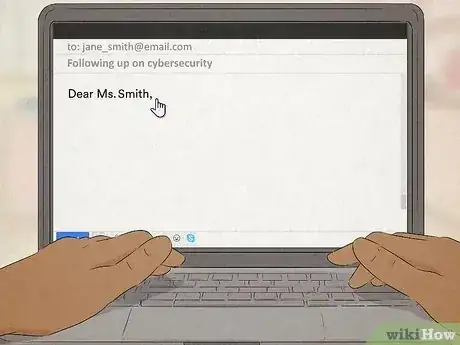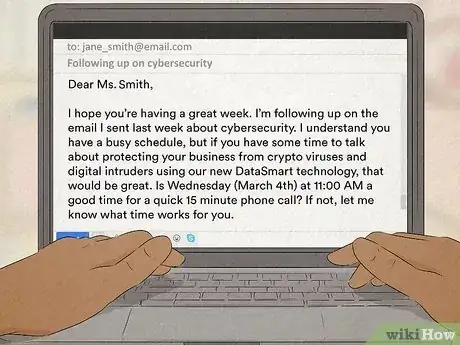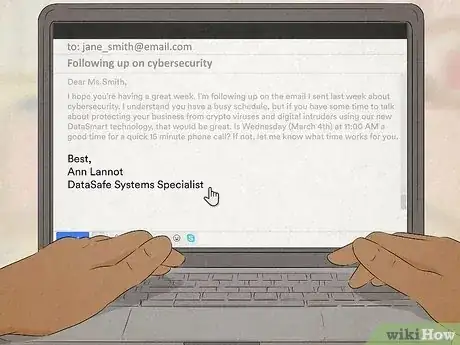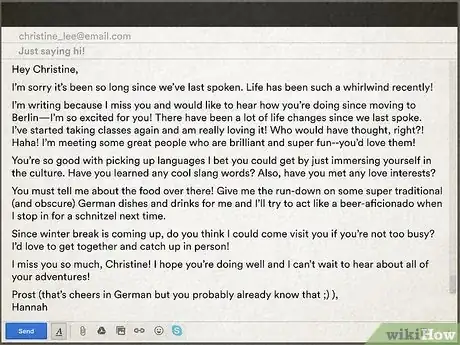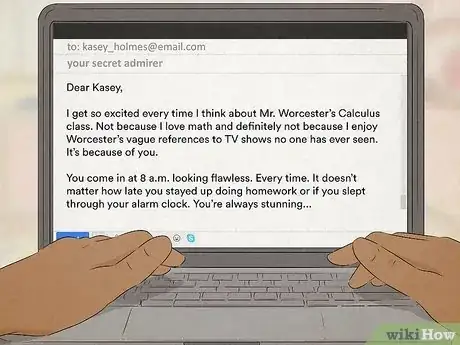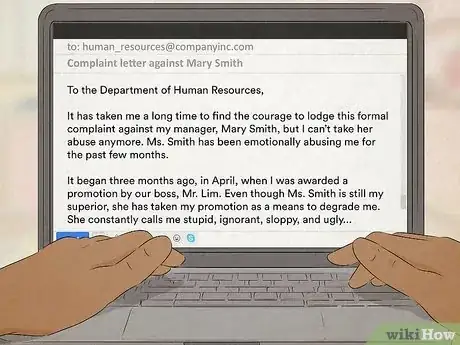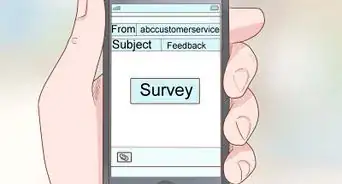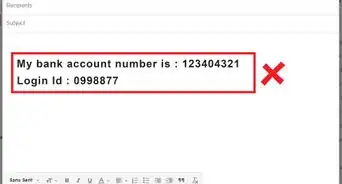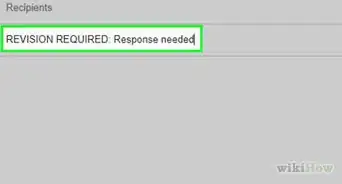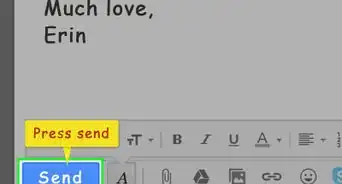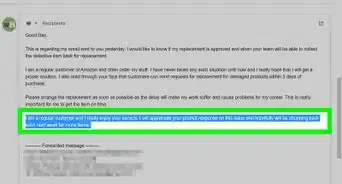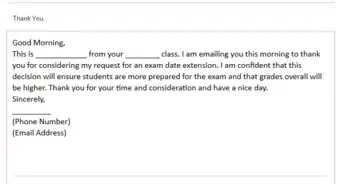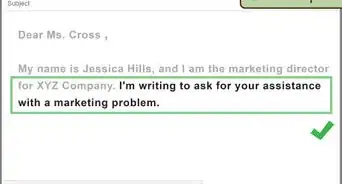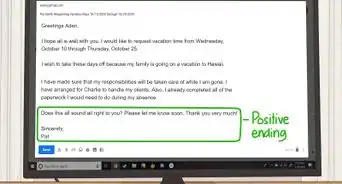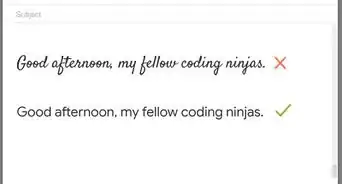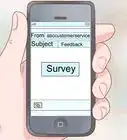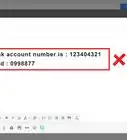This article was co-authored by Tami Claytor and by wikiHow staff writer, Rain Kengly. Tami Claytor is an Etiquette Coach, Image Consultant, and the Owner of Always Appropriate Image and Etiquette Consulting in New York, New York. With over 20 years of experience, Tami specializes in teaching etiquette classes to individuals, students, companies, and community organizations. Tami has spent decades studying cultures through her extensive travels across five continents and has created cultural diversity workshops to promote social justice and cross-cultural awareness. She holds a BA in Economics with a concentration in International Relations from Clark University. Tami studied at the Ophelia DeVore School of Charm and the Fashion Institute of Technology, where she earned her Image Consultant Certification.
This article has been viewed 293,073 times.
Do you want to know how to write an email? It can be intimidating if you don't know where to start. When sending emails, there is a general format you should keep in mind. Be sure to know your recipient and the differences between informal and formal email messages. This wikiHow guide will teach you how to write friendly, formal, and professional emails for every occasion.
Things You Should Know
- You must choose between a formal or informal tone when writing an email.
- Using the wrong tone in an email can cause issues with the recipient.
- When writing emails, you'll need an email account from a trusted service.
Steps
Email Essentials
-
1Set up an email address. If you do not already have an email address, you will need to sign up with an email provider before proceeding. Thankfully, there are many free web-based email providers who you can get a free email address with for no cost. Some of the most popular ones include:
- Gmail
- Hotmail
- Yahoo mail
-
2Click on "Compose" or "New." Before you can write an email, you will need to open a new, blank message box to write your email in. The exact method varies depending on the service you use, but there will usually be a button toward the top of the page with a label like “Compose,” “New,” or “New Message.”
- If you are uncertain about how to create a new message, check the help pages for your email service to learn more about it in greater detail.
Advertisement -
3List the recipients' email addresses. You do not need to list your own email address, but you do need to specify the email address of the person or people you intend to send the email to.
- A space is often enough to separate multiple email addresses, but some services do request that you separate multiple addresses with a comma or some other form of punctuation. If this is the case, these instructions should be specified by your specific email provider.
- Type the email address of the main receiver or receivers in the “To:” field. The main receiver usually refers to anyone whom the email is directly meant for or addressed to in the body of the email.
- Type other email addresses in the “CC:” field. This is the “copy” field. A receiver should be listed in the “CC:” field if the email does not directly mention them but does refer to something that individual should be aware of.
- Use the “BCC:” field to hide email addresses. If you do not want the receivers of an email to see a list of email addresses the message went to, you should type those email addresses in the “blind copy” field.
-
4Include an informative subject. Every email service will let you type a subject or title for your email in the “Subject” box.
- The subject should be brief, but it should also give the recipient some idea of what the email is about.
- For example, a casual email to a friend could simply say “What's Up?” If you are emailing with a question about an assignment, though, the subject line might read something like “Math homework.”
- Similarly, a question to a supervisor or professor could be labeled with a subject line like “Question” or “Question about...” followed by a brief label describing the topic in question.
- Note that a message without a subject will appear in a recipient's inbox with the label of “(no subject).”
- The subject should be brief, but it should also give the recipient some idea of what the email is about.
-
5Write the body of your email. The body of your email should be written in the large text box below the subject line. The body of each email should typically include a salutation, message, and closing.
- The nature of email is fast, so you should generally keep the length of your message fairly short.
-
6Hit the "Send" button. After you finish typing your email, review it to verify that there are no spelling or grammar mistakes and that the message clearly addresses the matter you wanted to bring up. If the email is ready, hit the “Send” button on the message box in order to send it away to the listed recipients.
Writing a Friendly Email
-
1Know when a friendly email is appropriate. Friendly emails should be reserved for loved ones, including friends, family, and romantic partners. If the message is casual in nature and you are sending it to someone you are on informal terms with, you can send a friendly email.
- The only time you would not send a friendly email to a family or friend would be if you are sending a group email of an official nature, like a plea for donations or sale advertisement. Since these emails will likely be sent to people who you are not on casual terms with, as well, you must gear the email toward them.
-
2Keep the subject line casual. A subject line is not strictly essential, but it is still a good idea to include a subject. Keep it short, sweet, and to the point.
- If you are just writing an email to catch up with a friend, you could include a humorous subject line or one as simple as "Long time no see!"
- If you are writing with a purpose, mention what that purpose is. For example, if you decide to write an email about a group outing, label the email with a subject that specifically mentions that outing.
-
3Consider addressing the recipient by name. For a friendly email, this is not strictly necessary, but it is still a polite way to begin the body of your message.
- Your salutation can be as simple as stating the person's name:
- "Bob,"
- Alternatively, you can include a friendly greeting with that name, as well:
- "Hey Bob!"
- "Hi Bob,"
- "Morning Bob!"
- Your salutation can be as simple as stating the person's name:
-
4Write your message clearly, but keep your language casual. The body of your message should be easy to understand, but the tone should be informal and conversational.
- Read your email and ask yourself if the content of the email sounds like the way you speak in person. If so, then you've achieved a good tone for a friendly email.
- Use contractions. Contractions are not a part of formal writing, but they are a common part of everyday conversation, making them appropriate for a friendly email.[1]
- Feel free to use slang. If desired, you can include Internet slang: "thx" instead of "thanks," "4" instead of "for," "l8r" instead of "later," etc.
- Also use emoticons when appropriate. :)
-
5Consider signing your name. Like salutations, a closing or signature is not strictly necessary for a friendly email, but it can be a good way to end the message.
- Your closing can be as simple as your name:
- "Jen"
- "-Jen"
- You can also get a little more creative with your closing:
- "Later! Jen"
- "This email will self-destruct in 3...2...1..."
- Your closing can be as simple as your name:
Writing a Formal Email
-
1Understand when formal emails are necessary. You should use a formal email when you are writing someone you are not on casual terms with. This includes, among others, supervisors, co-workers, clients and customers, instructors, and community or political officials.
- Note that you may find that strict formal emails are not necessary with someone who falls into one of these categories once you build a working relationship with that person. When a "formal" email becomes a little too rigid, you should write a "semi-formal" email.
- The tone of your message can be a little more conversational but you should stay away from Internet slang.
- You should still include your signature, but you may not need to provide all of your contact information below your name.
- Note that you may find that strict formal emails are not necessary with someone who falls into one of these categories once you build a working relationship with that person. When a "formal" email becomes a little too rigid, you should write a "semi-formal" email.
-
2Include an informative subject. The subject should be brief but accurate. Get straight to the matter at hand.
- Example:
- "Essay question" (when writing an email to a professor asking for details about an essay assignment)
- "Application for Management Job Ad" (when sending an email in response to a job ad)
- "Problem with Part #00000" (when typing an email to request customer service or to report a technical problem)
- Example:
-
3Type a formal salutation. A formal salutation should include the word "Dear" followed by the receiver's name. Use the receiver's last name and an appropriate title, and follow the salutation with a colon.
- Example:
- "Dear Mr. Smith:"
- "Dear Ms. Jones:"
- "Dear Dr. Evans:"
- Example:
-
4Make sure that the body of your email is concise and accurate. Restrict the content of your email to a few paragraphs that directly address the subject of your email. Use formal language and make sure that your spelling and grammar are accurate.
- Avoid the use of contractions.
- Do not use Internet slang or emoticons.
-
5Include an appropriate closing. The most common closing is "Sincerely," but there are a few others that can work, as well. Keep the closing polite and follow it with a comma.
- Other possible closings include:
- Regards
- Yours faithfully
- Best regards
- Thank you
- Best wishes
- Other possible closings include:
-
6Provide contact information in your signature, when appropriate. Include your full name below the closing of your email. Below your name, you may want to include your official title and any contact information that come in handy.
- Your title, if you have one, should include your position and the name of the company or institution you are a part of.
- Include your telephone number, fax number, and email address, at minimum. You may also wish to include your mailing address and website URL.
Specific Types of Friendly Emails
-
1Write an email to a friend who moved away. If a friend, relative, or loved one has recently moved to a new location, write an email to check in by asking about how the move went, what the new neighborhood is like, and so on.
-
2Send a friendly email to a friend who never gave you an email address. If you got a casual friend's email address from a third party, it is important that you use your email to verify that the address is correct and that you quickly clarify who you are.
-
3Learn how to write an email to a guy. If you're a girl writing an email to a guy for the first time, you might feel a little unnerved. This is especially true if the guy you're writing to is potential crush material. Try writing an email that seems casual yet intelligent and composed.
- While it's a pretty risky move, you can also use email to tell a guy you like him.
-
4Understand how to write an email to a girl. If you're a guy writing an email to a girl for the first time, the task may seem pretty daunting. Keep your cool and write a message that is both casual and well put together.
-
5Compose a flirty email. If you want to be cute and playful with the recipient of your email, use the same sort of language you would use to flirt with that person in reality. Emoticons and “hugs and kisses” (xoxo) also come in handy.
- Similarly, write a flirty email to someone on an dating website. For an email like this, though, you need to be both flirty and informative so that the recipient gets a good idea of who you are.
-
6Write a love email. In this digital age, the love email can be viewed as an equivalent of the love letter. If your romantic partner is away and you want to send a quick note expressing your love, email is the fastest way to do it.
Specific Types of Formal Emails
-
1Apply for a job via email. When sending in your resume and job application via email, you need to explain which job you are applying for, why you want it, and what qualifications you have that make you well-suited for the job. You should also include your resume as an attachment.
- Similarly, you can also write an email applying for an internship. Describe what sort of internship you are looking for and how it will help you meet your career goals. Also provide reasons why you should be selected for the internship.
- Send a follow-up email if you have not yet received a reply about the position you applied for.
-
2Know how to write an email to your professor. Emailing a professor may seem intimidating, but it is no more difficult than any other formal email. Your professor is likely a busy person, so keep your questions as concise as possible.
- If your professor knows you well enough, you can also email your professor when asking for a letter of recommendation.
-
3Write a query letter via email. A query letter is a letter asking an editor if he or she would consider accepting a work of writing for publication consideration. You need to describe the work in question well enough to give the editor a good idea of what it is about.
-
4Use email to contact human resources. If you have a human resources concern about your company, the fastest way to address it is by sending an email to the correct people in HR. Make sure that the email clearly addresses the issue.
Sample Professional Emails
Community Q&A
-
QuestionWhat am I supposed to write on cc and Bcc
 wikiHow Staff EditorThis answer was written by one of our trained team of researchers who validated it for accuracy and comprehensiveness.
wikiHow Staff EditorThis answer was written by one of our trained team of researchers who validated it for accuracy and comprehensiveness.
Staff Answer wikiHow Staff EditorStaff AnswerCC lets you send a copy of the email (and correspondence) to someone else. For example, in an email addressed [To: HR], you can [CC: your manager's email] so your manager can see the correspondence. The To: recipient will be able to see your manager's email. If you use BCC, your manager will still see the correspondence, but the recipient will not be able to see your manager's email. Only use CC and BCC if needed. Otherwise, you can leave it blank.
wikiHow Staff EditorStaff AnswerCC lets you send a copy of the email (and correspondence) to someone else. For example, in an email addressed [To: HR], you can [CC: your manager's email] so your manager can see the correspondence. The To: recipient will be able to see your manager's email. If you use BCC, your manager will still see the correspondence, but the recipient will not be able to see your manager's email. Only use CC and BCC if needed. Otherwise, you can leave it blank. -
QuestionHow do I send documents along with the email?
 Community AnswerClick the paper clip on the email composition screen. This will allow you to browse your computer for the documents you'd like to send and attach them.
Community AnswerClick the paper clip on the email composition screen. This will allow you to browse your computer for the documents you'd like to send and attach them.
Warnings
- Never provide usernames, passwords, or personal information like credit card numbers and social security numbers via email.⧼thumbs_response⧽
About This Article
To write a formal email, start with a formal salutation followed by the recipient's last name and appropriate title, like "Dear Mr. Smith." Then, when you're finished writing the body of your email, conclude with a formal closing, like "Sincerely," "Best regards," or "Thank you." Next, include your full name below the closing of your email, followed by your title and the name of your company, if you have one. Finally, underneath your name, add your phone number and email address. To learn how to write a friendly, casual email, scroll down!

